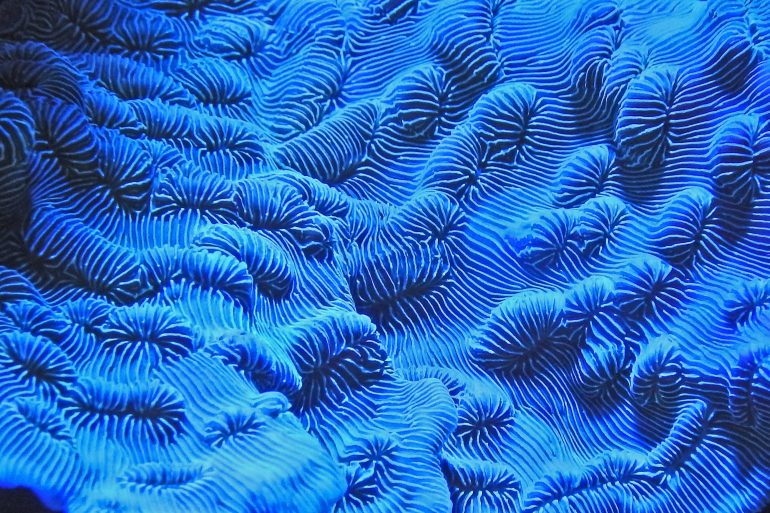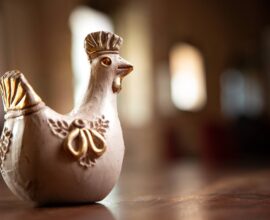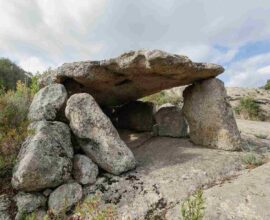Sardinian Coral: the red gold of the Mediterranean Sea
Sardinian Coral: characteristics, uses and properties
The splendid sea of Sardinia is a treasure chest that holds countless riches such as the Corallium rubrum, or red coral, an octorall of the Coralliidae family widespread in the Mediterranean and the Eastern Atlantic. In general, it grows up to 200 meters in depth, in poorly lit places and with poor vegetation.
The Sardinian coral has a bright red or pink colour and creates branched colonies that may exceed 20-30 cm in height and lives in distinct living conditions: constant salinity and reduced movement of the water and attenuated illumination. It thrives in shady and sheltered places, such as caves, overhangs and fissures between rocks, usually at a depth between 20-30 meters and 200 meters, but at times it can be found further toward the surface.
Coral is traditionally considered a lucky charm to give to newborns, but its meaning changes according to time and cultures. In fact, for the pagans, the pointed branches of coral were used to fight the evil eye launched out of envy, while for Christians, the red colour was the symbol of the passion of Christ and for this reason, in the Middle Ages, coral was used for the reliquaries of the Cross. Corallium rubrum also stands out in numerous late medieval and Renaissance paintings, such as the Madonna del Solletico by Masaccio, the Madonna di Senigallia and the Pala di Brera by Piero della Francesca.
In the Pacific Islands, coral was put in tombs to protect the souls of the deceased from evil spirits but was also used, along with lava stone, to build temples. In ancient Egypt and Greece, however, it was reduced to dust and scattered over the fields to protect crops from storms and insect attacks, while the women of ancient Rome wore coral earrings to attract men.
Red coral is also used in crystal healing because of its many benefits: it stimulates circulation, cardiac activity and vital energy, strengthens the spine, dissolves joint blocks, removes negativities, enhances sensuality and strengthens feelings of affection.
It is thought that the word coral comes from the Greek “koraillon”, which means hard skeleton, or from “Kura-halos“, meaning human form. A third hypothesis suggests that the etymology of the word is to be found in the Hebrew word “goral“, a name that indicates the stones once used for the oracles in Palestine, Asia and the Mediterranean area.

Sardinian Coral: the legend behind a jewel of the sea
According to Ovid, one of the main exponents of Latin literature, the red coral came from the blood of Medusa.
Medusa, the most famous of the three Gorgoni, was a monster able to petrify anyone who looked directly into her eyes. The only one able to defeat her was Perseus who, helped by Athena, managed to behead Medusa from whose neck were born the winged horse Pegasus and the giant Chrysaor.
The myth tells that Perseus, on his way home, saw a naked and beautiful girl chained to a rock: Andromeda, destined to be devoured by a terrible sea monster because of her mother’s vanity. Andromeda had resigned to her fate when Perseus offered to free her in exchange for her hand in marriage.
The young man used the head of Medusa to petrify the monster, and when he placed it on a rock, the blood of the gorgon came into contact with the foam created by the waves of the sea and petrified some algae that assumed the typical red colour of the coral.
Vasari, one of the most important Italian painters of the sixteenth century, cites the history of the birth of coral in the description of his famous painting Perseus and Andromeda and writes: “(…) dov’è Perseo, che sciogliendo Andromeda, nuda allo scoglio marino, et havendo posato in terra la testa di Medusa, che uscendo sangue dal collo tagliato, et imbrattando l’acqua del mare, ne nascieva i coralli” – (…) where is Perseus who by freeing Andromeda, naked on the sea rock, and having laid the head of Medusa on the ground, that blood coming out from the cut neck soiling the water of the sea, the corals were born”.

Coral fishing in Sardinia: an ancient and fascinating history
The coral of Sardinia is one of the finest in the Mediterranean and is mined to obtain necklaces and bracelets or mounted on gold and silver for the creation of beautiful jewellery.
The mining, processing and marketing of coral in Sardinia are historical activities: it seems that the “red gold” was collected, and subsequently exported to the East, already at the time of the Carthaginian domination. However, according to scholar Giovanni Tescione, the Sardinians mined coral since the Neolithic period, as proven by the numerous finds dating back to the Phoenician-Punic period in some archaeological sites such as those of Tharros and Nora.
The findings of the Phoenician-Punic civilization testify that the coral was used for the manufacture of amulets, a practice confirmed by the archaeologist Giovanni Pesce who writes: “Amulets can be considered as beads in hard stone (rôca crystal, etc.) or a coral or glass paste, strung to form necklaces or bracelets“.
The coral mining in Sardinia continued during the Roman age, a period in which the splendid jewel of the sea was used in its raw state and worn mainly by women. About three kilos of natural coral dating back to the Roman Age were found in the excavation of the theatre temple in Cagliari, a temple dating back to the second century B.C. and dedicated to the cult of Venus and Adonis.
The collection and trade of coral continued during the Byzantine period, but the first official documents on Corallium rubrum mining go back only to the XIII century. While there is little information on the activity of collection by the Sardinians during the medieval age, there is much information about the presence of fishermen in Sardinia and coral traders from Marseillaise, Provençal, Pisan and Genoese attracted by the wealth of the island’s coral reefs.
In modern times, the attention to coral did not diminish, and the precious material was used in various fields: from jewellery, both sacred and profane, to furniture and ornamental art.
In the sixteenth century, the presence of coral on the Sardinian coast was also reported by the historian Giovanni Francesco Fara: “From the sea of Sardinia comes a very esteemed coral, black and red, which they call “antifate”. It grows underwater where, with its roots between the rocks, it appears as green grass, but once extracted, it hardens into a precious stone. There are many along the stretch of the Bosa sea, Alghero and Sassari at Monte Girato and Asinara. Every year in April, May, June, July and August, when the sea is not troubled by storms, the waters are torn by nets from a large number of boats; It is also extracted between Sardinia and Corsica and in the Gulf of Cagliari at Capo Carbonara, and in other places (…)“.
The boats mentioned in Fara’s script used the so-called “ingegno” to mine coral, a tool consisting of two large wooden boards arranged in a cross from which hung bunches of fishing nets. The “ingegno” was lowered into the sea and pulled up and down to make sure that the coral branches remained entangled in the nets so that they could tear them away from the rocks.
In the second half of the twentieth century, when the boats become larger and the sails were replaced by engines, the “ingegno” changed appearance: the two wooden axes became a single large steel axis to which pieces of the net are attached. Once lowered into the sea, the tool was dragged along the coral reef to tear the coral branches attached to the rocks.
Today, the use of the “ingegno” and similar gear is strictly forbidden and to protect the marine habitat, coral fishing in Sardinia is only allowed to 30 professional underwater fishermen, with regular licenses, at depths of not less than 80 metres and in the period from the 1st of May to the 15th of October.
Would you like to discover the beauty of the Sardinia coral and have a dream holiday in a true paradise? Discover the Forte Village Resort in Sardinia.






